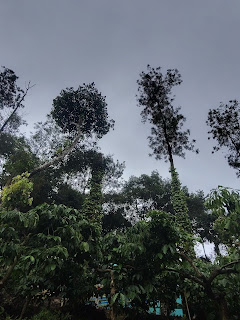"Alongside oxygen and water, money has become one of the most vital elements of modern human life—not for physical survival, but for navigating the structures of society."
In Kodagu district, Karnataka, the plantation is the main source of income. The people of Kodagu grow coffee, pepper among others to earn their livelihood. Well the prices of coffee has been good over the past couple of years. However there is a major caveat attached to it and that is the cost of labour.
Excluding a few, the local labour, I would say indulge in loot as their wages are over the top. Visit any place in Kodagu and no topic would end without a conversation around the labour and their wages.
Rise in Muslim population:
Now coming back to the issue of labour. Since 2011, there has been a steady influx of migrant workers who say that they have come from Assam. Hence the term Assam labour is widely used in Kodagu. For example if one asks, ‘who is working on your estate,’ then the answer most of the time is ‘Assam labour.’
The so-called Assam labour
One would need to observe them carefully when elections are round the corner. They are stressed out on whether or not they would get train tickets on time. Come what may, not voting is not an option for them as there is every chance they will be stripped of their fake Indian identity. It is a well known fact that touts along the borders of the northeastern states and West Bengal run a major racket in which fake voter id and Aadhaar cards are provided to the illegal migrants. The touts issue these fake documents subject to the condition that at any cost they would have to vote for a party of the tout’s choice during the elections. Failing to do so would mean that their documentation would be taken back, following which they would be reported for deportation. This explains the stress of these workers at the time of an election.
A mafia:
Today this illegal immigrant labour is controlled by a mafia. People from Kerala control a large number of these workers. They ferry them in jeeps in the morning and pick them up once work is over. It is no longer like the earlier days when the Kodavas had complete control over the labour. They were permanent workers living on the property and if one fell short, the planter would borrow workers from a friend or relative.
This practice has come down a lot today. The Kodavas do not control the labour market anymore. They are more dependant on the contractors from Kerala who have complete control over the labour market and they determine the price. They are however smart enough to ensure that the migrant labour is cheaper that the locals.
When one speaks about the local labour, it is not as though they are there in abundance. Many have move to the cities exploring greener pastures. The Yerava community which was the original local labour is nearly non-existent today. Their population has dwindled owing to various factors such as low fertility rate etc.
This led to the influx of workers from Kerala, who initially would work on estates. Gradually they moved to taking contracts of paper, coffee and today they even take the entire estate on lease. The migrant worker or the so-called Assam labour made their way after the workers from Kerala graduated into taking contracts and running businesses all around Kodagu.
A planter works all year long so that he can harvest his coffee. At the peak season when labour is in high demand, the only option left is to hire the migrant labour. This is because they are cheap and available.
It is a fact that this is a ticking time bomb. Very soon, one may witness a West Bengal or northeast like scenario where demographic changes have taken place.
It is a real catch-22 situation for every planter in Kodagu. And until the community stands united and decides that each one will pay a common wage to the local worker. The problem is that there is no unity among the planters on the wages to be paid and the only thought on their mind is let the work get over soon no matter what the wage is. Until such time, for the Kodagu planter is a choice between the devil and deep sea.

Comments